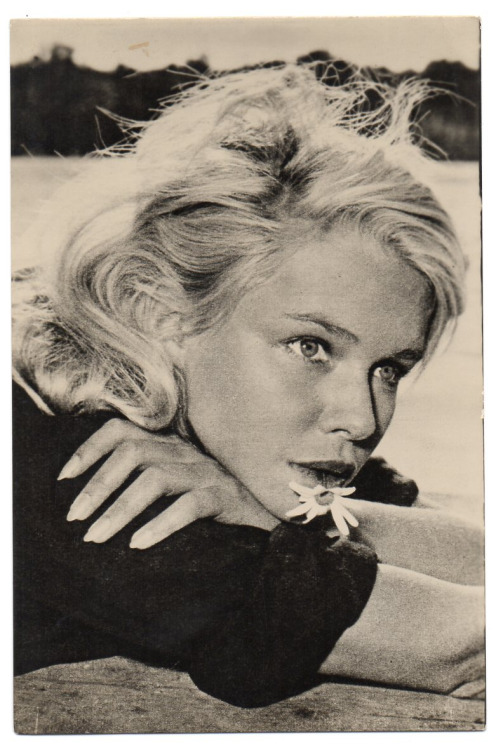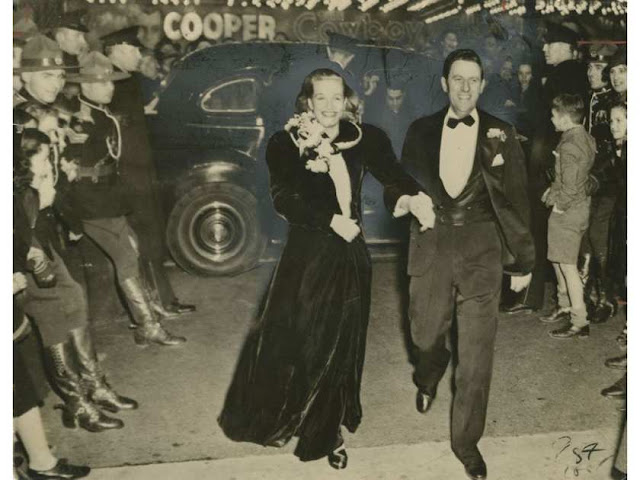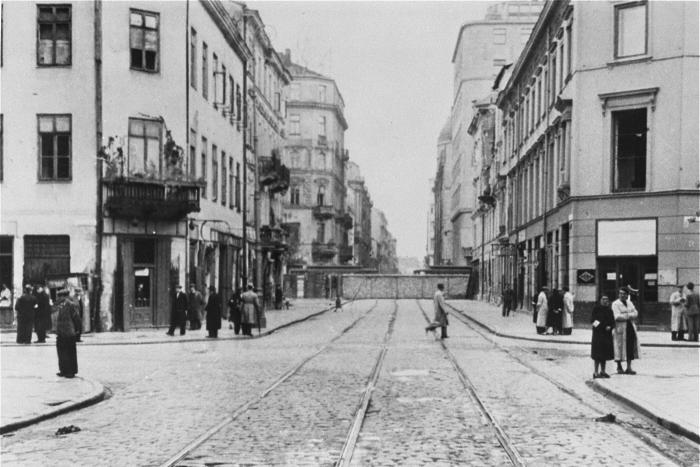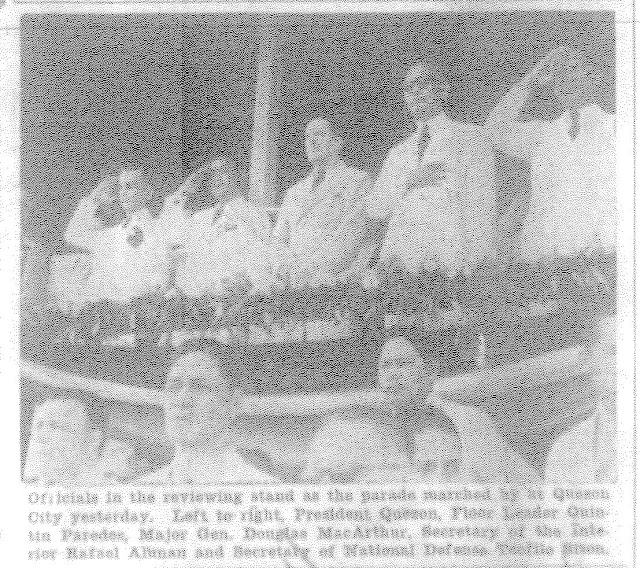Battle of Britain: Both sides draw some conclusions from the course of the battle so far on
17 October 1940. They are vastly different conclusions, and both are completely unwarranted - for vastly different reasons.
Reichsmarschall Hermann Goering attempts to put a bit of a period on the disastrous Battle of Britain by praising his pilots:
In the past few days and nights you have caused the British world enemy disastrous losses by your uninterrupted disastrous blows. Your indefatigable, courageous attacks on the heart of the British Empire, the City of London, with its eight and a half million inhabitants, have reduced British plutocracy to fear and terror. The losses which you have inflicted on the much-vaunted Royal Air Force in determined fighter engagements is irreplaceable.
It is true that recent attacks on London have been especially severe. However, throughout the battle, there has been a decided tendency for the Luftwaffe to think that it has been doing than it has. The RAF's losses are hardly "irreplaceable," and its losses are quickly replaced by newer and better aircraft and more pilots coming from Canada and elsewhere. The Royal Air Force has survived, and the Luftwaffe's night attacks are doing little to curb its growth.
On the British side, the continued conflict about tactics once again breaks out into the open. Air Vice-Marshal Leigh Mallory of No. 12 Group, along with his second Douglas Bader, pushes his favored tactic of the "Big Wing" again. This is the assembly of large fighter formations composed of multiple squadrons before attacking intruders. AVM Keith Park at the more stretched No.11 Group, however, resists this tactic as it wastes valuable time and allows many intruders to complete their missions and escape. He would rather continue the strategy of sending squadrons into battle as soon as they assemble rather than go through the added complication of stacking squadrons. Air Marshal Dowding basically backs Park, while Leigh Mallory has the support of the Air Ministry - partly due to war hero Bader's political connections with it and Churchill.
There are pros and cons to each approach, but Park has been the point man who essentially saved England in its darkest days. His leadership worked, as did Dowding's. Leigh-Mallory has been a carper who at times appeared to disregard Park - to the detriment of operations. Bader, for his part, is a propaganda hero (somewhat overblown, but his personal story, of course, is inspirational) with a Member of Parliament in his unit. This has become a classic power struggle that has more to do with becoming a master of the domain rather than tactics. There are going to be winners and losers in short order.
With this background, after some delay, a long-anticipated meeting is held today under the rubric of Major Day Tactics in the Fighter Force. This becomes a classic bureaucratic set-up, with the guys on the front-lines - Dowding and Park - completely outmatched by the REMFs (or, as Hitler would put it, the swivel-chair Generals). Deputy Chief of the Air Staff Sholto Douglas chairs the meeting, and Leigh-Mallory brings junior officer Bader - a clear sign that this is a political affair, as otherwise, Bader has no reason to be there. It really doesn't matter whose ideas are better - Leigh-Mallory and Bader are "in good" with the powers that be, and that is it.
As a direct result of this meeting - handled quite discreetly, with no blame attached and decorations granted and so on and so forth - both Dowding and Park get the ax. Dowding "decides to retire," and Park is given a temporary post in the training sector. The Air Ministry's description of the battle issued later does not even bother to mention either man. Leigh-Mallory takes over the more prestigious No. 11 Group from Park (made cushier because Park has done all the heavy lifting), and Bader is promoted to Wing Commander at Tangmere. Douglas, meanwhile, takes the job he quietly had coveted all along - Dowding's spot in charge of Fighter Command.
As George Carlin would say, there's a big club, and you ain't in it.
 |
| Sir Hugh Dowding and Douglas Bader in 1945. |
Over England, the weather turns better again, allowing large-scale raids, though visibility remains poor. The days are getting shorter, and the Luftwaffe no longer has its heart in the battle - which even a fool could see that it has lost, as evidenced by Goering's spurious valedictory quoted above.
The day's first raid occurs at 08:30, with fighter-bomber (Jabo) raids toward London. This group also includes some Dornier Do 17s and numbers altogether about 100 planes. The Germans bomb Margate, Broadstairs, and Stanmore without too much interference due to the cloudiness.
After lunch, another Jabo raid at 13:00-15:00 targets East London, Kenley and Biggin Hill. The RAF sends up 14 Squadrons, and massive dogfights break out all across southern England. Central London takes some damage, as does RAF Kenley.
At 17:00, another Jabo raid targets various objectives in Kent and Sussex. Three Fighter Command squadrons handle this attack.
After dark, the Luftwaffe targets the usual suspects of London, Liverpool, Birmingham, the Midlands, and East Anglia. There also is some mining in the Thames Estuary and off the Suffolk coast. The night's biggest casualty is the automatic signaling equipment at Waterloo Station, which is replaced until repair by human signallers.
Overall, it is a fairly bad day for the Luftwaffe. It loses about 15 planes, while the RAF only loses a few. As usual, when the Luftwaffe launches major raids as today, it loses disproportionately, whereas when it keeps the raids small and varied as in recent days, the losses are about equal.
Two Home Guard officers, Sub-Lt Jack Maynard Cholmondeley Easton, RNVR, and AB Bennett Southwall, RN, attempt to disarm a mine in a house. The mine slips and goes off, killing Southwall and badly injuring Easton. They both receive the George Cross. Another man, 2nd Lt Alexander Fraser Campbell of the 9 Bomb Disposal Coy Royal Engineers, also perishes while working on a bomb and receives the award. While all involved undoubtedly earned their awards many times over - what more can you give than your life? - this continues a trend where the George Cross - originally conceived as a way to reward civilians - typically is awarded instead to men working (and often dying) in their official capacities.
Luftwaffe ace Hans-Karl Mayer, Gruppenkommandeur I./JG 53, never returns from a test flight today. His body washes up on a beach 10 days later. He was possibly a victim of RAF ace F/L D. McMullen of No. 222 Squadron. Mayer had 39 victories, just under the leaders.
 |
| Luftwaffe ace Hans-Karl Mayer. |
European Air Operations: RAF Bomber Command has no operations due to the foul weather. Coastal Command makes a daylight attack on Brest.
Battle of the Atlantic: U-boats have infested the major sea lanes, and today all the hard work to change bases from Germany to forward bases in Norway and France pays off.
Several convoys get hit in running battles that last several days. In addition, four German destroyers (Hans Lody, Karl Galster, Friedrich Ihn, and Erich Steinbrinck) with six torpedo boats are sighted off Brest, forcing the Admiralty to re-route Convoys OG 44, SL 50 and HG 45 to the west. The Admiralty despatches Two light cruisers (HMS Newcastle and Emerald) and destroyers from Plymouth to confront the German ships, and the British cruisers chase the German ships from 16:00 to 18:00 before the faster Kriegsmarine ships slip away as the light fades.
Convoy SC 7 is entering the Western Approaches from Canada and only has as escorts three ships: destroyer HMS Scarborough, sloop HMS Fowey and corvette HMS Bluebell. This is one of those early-war situations where the number of U-boats watching actually is greater than the number of escorts. There is air cover by Coastal Command, but it can only do so much. This is only the beginning of the torture of Convoy SC 7.
U-38 (Kptlt. Heinrich Liebe), on her seventh patrol out of Lorient, is shadowing Convoy SC 7 about 150 km northeast of Rockall when it spots 3554 ton Greek freighter Aenos. The freighter is a straggler from the convoy. U-38 fires a torpedo at 09:57 but misses. The U-boat then surfaces and uses its 105 mm deck gun on the ship, sinking it at 10:52. There are 25 survivors and 4 crew perish. Canadian freighter Eaglescliffe Hall rescues the crew and takes them to Scotland.
U-38 is not the only U-boat stalking Convoy SC 7; in fact, half a dozen submarines have their eyes on the large convoy. U-48 (Kapitänleutnant Heinrich Bleichrodt) sets up and fires three torpedoes into the convoy. All three hit.
U-48 (Kptl. Heinrich Bleichrodt) torpedoes and badly damages 9512-ton British tanker Languedoc in Convoy SC 7. After all 41 crew survive and are taken off on other ships, the tanker is deemed irrecoverable. Royal Navy corvette HMS Bluebell scuttles it.
U-48 also torpedoes and sinks 3843-ton British freighter Scoresby (Master Lawrence Zebedee Weatherill) in Convoy SC 7. The entire crew survives when also picked up by HMS Bluebell.
U-48 torpedoes and damages 4678-ton British freighter Haspenden. The ship makes it to port.
After the U-48 attacks, the U-boat is chased by the Scarborough. This forces the U-boat to go deep, putting it out of action as far as Convoy SC 7 is concerned. However, this incident also takes the Scarborough, one of only three escorts, out of the picture as well. From this point, the Convoy SC 7 only has two escorts - and more than double that number of U-boats are watching and waiting for opportunities to attack.
U-93 (Kptlt. Claus Korth), on her first patrol out of Kristiansand, Norway, is tracking Convoy OB 228 south of Iceland. At 03:39, he torpedoes and badly damages 2715 ton British tanker Uskbridge (Master Wilfred Breckon Smith). Tankers are very difficult to sink. After waiting for it to sink, Korth finally puts another torpedo into it at 13:36, splitting it in two. There are 27 survivors and six crew perish.
After being spotted by the British escorts of Convoy OB 228, U-93 is attacked twice with ships and once by a flying boat. After surviving these attacks, Korth gets down to business again. He torpedoes and sinks 1168 ton Norwegian freighter Dokka. There are seven survivors and ten crew perish. He questions the survivors, then proceeds on his way after being spotted by the convoy escorts again.
 |
| Popeye animation "My Pop, My Pop" released today. |
E-boat attacks off the East Anglia coast are so common that the area has become known as "E-boat Alley." Today, a major E-boat attack cements that nickname.
E-boat S-27 attacks Convoy FN 11. It torpedoes and badly damages British collier Gasfire about 11 km northeast of Smith's Knoll at Great Yarmouth. There are 11 deaths. Having lost her stern, the collier is towed to Spurn Head at the mouth of the Humber and beached, where it will be repaired after being towed to the River Wear.
E-boat S-18 (Christiansen) torpedoes and badly damages 1595 ton coaster Hauxley in Convoy FN 11. HMS Worcester takes her in tow, but she sinks on the 18th. There is one death.
E-boat S-24 torpedoes and sinks 3754-ton French ship P.L.M. 14 in Convoy FN 11.
British freighter Brian claims to have sunk one of the E-boats that attacked Convoy FN 11, but there is no record of that in the German archives. In addition, British long-range coastal guns at Dover shell the E-boats, but the distance is too great and the boats too fast for any hope except a very lucky hit.
British 1361 ton freighter Frankrig hits a mine and sinks off Orford Ness, Suffolk. All 19 crew survive, taken on board HMS Holderness.
Royal Navy trawler HMT Kingston Cairngorm hits a mine south of the Isle of Portland, Dorset. Taken in tow, it sinks on the 18th.
Royal Navy minesweeper HMS Dundalk hits a mine off Harwich, Essex and suffers extensive damage. Fellow minesweeper HMS Sutton takes it in tow, but the Dundalk sinks. There are four deaths.
The Faroe Islands 65-ton fishing trawler Cheerful hits a mine and explodes off the Faroe Islands.
British 15 ton fishing boat Albatross hits a mine and blows up off Grimsby, Lincolnshire. All five onboard perish, including skipper J.A. Ward. The crew is listed on Tower Hill Memorial in London.
Sailing ship Janna A (unknown flag) hits a mine and sinks in the Oosterschelde, Zeeland. It lies just offshore and becomes a fairly popular diving wreck, with lots of lobsters.
British 936 ton freighter Ethylene hits a mine just northeast of East Oaze Light Buoy but makes it back to port.
British 1570 ton freighter George Balfour hits a mine just off Aldeburgh Light Vessel. The ship makes it back to port.
Convoy OB 230 departs from Liverpool, Convoy FN 311 departs from Southend, Convoy FS 312 departs from Methil.
Vice-Admiral J. C. Tovey replaces Admiral of the Fleet Sir Charles M. Forbes as Commander-In-Chief of the Home Fleet.
Battle of the Mediterranean: Royal Navy control of the Straits of Gibraltar continues to be somewhat shaky, at least as far as the French Navy is concerned. Previously, some French cruisers had reinforced Dakar by passing through the Strait, causing the British commander there to be sacked. Today, French torpedo boat La Batailleuse escorts submarines Pegase, Monge, Espoir and Vengeur westbound to Casablanca. Why the British are allowing these transits is a mystery because they have enough ships to at least attempt interceptions. It may simply be that the French vessels simply sneak through without being spotted - which also raises questions about British operations on Gibraltar.
The South African Air Force bombs Italian transports at Neghelli, Abyssinia.
Orde Wingate arrives in Cairo.
The Chief of Imperial General Staff in London informs Governor Dobbie on Malta that it will be sending some tanks and artillery to Malta. In addition, a battalion will be shifted from Egypt to Malta. This is completely inadequate to repel a serious invasion but does mitigate the military's weakness on Malta. The General Staff somewhat puckishly suggests that building dummy tanks might convince the Italians to stay away from the island.
 |
| Marion Michael: born 17 October 17, 1940, Königsberg Germany (now Kaliningrad, Russia); star of “Liane, Jungle Goddess” (1956), “Jungle Girl and the Slaver” (1957) and “Davon träumen alle Mädchen” (1961). Michael passed away on 13 October 2007 at Brandenburg Germany. |
German/Soviet Relations: German Foreign Minister Joachim Ribbentrop's lengthy letter to Soviet Premier Josef Stalin is finally fully translated (after several days) and delivered to Soviet Foreign Minister Vyacheslav Molotov. Among the ideas in the far-reaching letter is the institution of a New World Order led by Germany, Italy, Japan, and the Soviet Union. Ribbentrop is furious at the delay in delivering the letter and feels it should have been hand-delivered to Stalin himself, but the embassy staff knows what it is doing and handles things properly.
Molotov is somewhat nonplussed by the letter - he virtually directs Soviet Foreign policy, with of course the required approval of Stalin, and the letter does not address concerns he has about recent German activities in Finland - but decides to accept Ribbentrop's invitation for a visit in November. Molotov begins preparing a response to be signed by Stalin.
Holland: Consistent with other changes in occupied Europe, Holland now institutes a requirement that Jews carry special documents with them.
Japan: There is a general amnesty which releases Buddhist priest Inoue Shirō (Inoue Nissho ) of the infamous League of Blood incident of 1932 (assassinations of several liberal political figures). Inoue is an ultra-nationalist hero to some, and it is possible to interpret this gesture as an increasing nationalism and imperialism within the Japanese government.
China: Following through on its recent vow, Great Britain reopens the Burma Road from Burma to China after it has been closed for three months.
British Homefront: The London bus system has taken a beating during the Blitz. Today, the London Transport requests provincial bus systems to send replacement buses to keep the London transport system running.
American Homefront: "My Pop, My Pop" is released by Paramount. Popeye's Pappy produces problems.
 |
| British actress Madeleine Carroll being escorted into a Red Cross benefit at the Orpheum Theater, Royal Mounties clear a path. Vancouver. 17 October 1940. |
October 1940
October 2, 1940: Hitler's Polish PlansOctober 3, 1940: British Cabinet ShakeupOctober 4, 1940: Brenner Pass MeetingOctober 5, 1940: Mussolini Alters StrategyOctober 6, 1940: Iron Guard MarchesOctober 7, 1940: McCollum MemoOctober 8, 1940: Germans in RomaniaOctober 9, 1940: John Lennon ArrivesOctober 10, 1940: Führer-SofortprogrammOctober 11, 1940: E-Boats Attack!October 12, 1940: Sealion CancelledOctober 13, 1940: New World OrderOctober 14, 1940: Balham TragedyOctober 15, 1940: Mussolini Targets GreeceOctober 16, 1940: Japanese Seek OilOctober 17, 1940: RAF ShakeupOctober 18, 1940: Convoy SC-7 CatastropheOctober 19, 1940: Convoy HX-79 CatastropheOctober 20, 1940: Convoy OB-229 DisasterOctober 21, 1940: This Evil Man HitlerOctober 22, 1940: Aktion Wagner-BurckelOctober 23, 1940: Hitler at HendayeOctober 24, 1940: Hitler and PetainOctober 25, 1940: Petain Woos ChurchillOctober 26, 1940: Empress of Britain AttackOctober 27, 1940: Greece Rejects Italian DemandsOctober 28, 1940: Oxi DayOctober 29, 1940: US Draft BeginsOctober 30, 1940: RAF Area Bombing AuthorizedOctober 31, 1940: End of Battle of Britain2020













